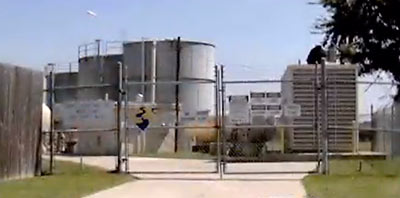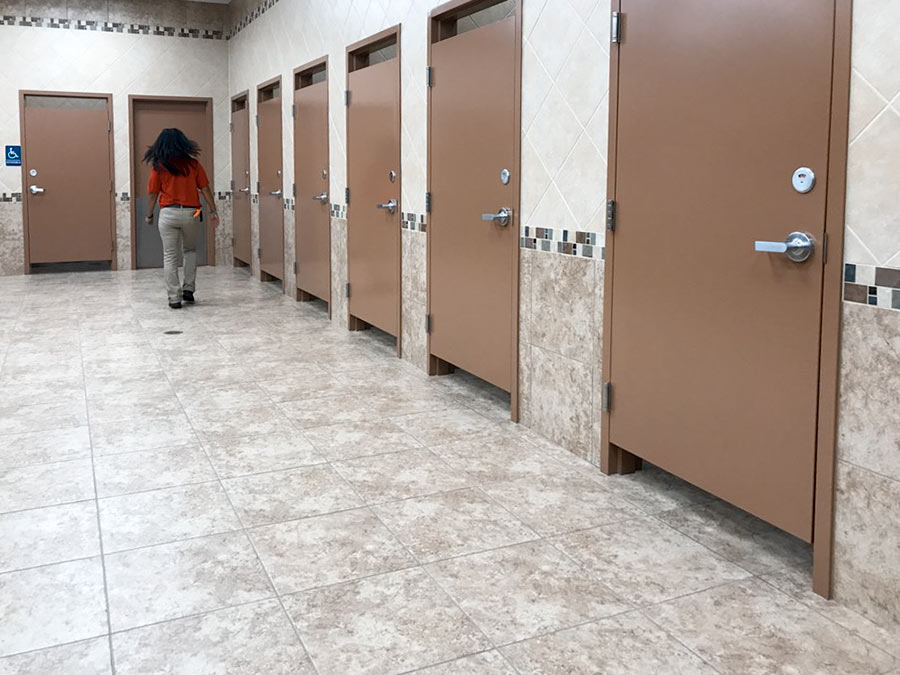
All it takes is a little subtraction! Say you’ve got 20 picocuries of cancer-friendly alpha radiation per liter in your drinking water. Well, there’s gotta be some margin of error in measuring it, right? Say, 6 picocuries per liter? Then just go ahead and subtract that number out (because you’ve gotta be optimistic about these things, you know, or it’ll kill you). Then . . . voilà ! Your level of those nasty little mutation-causing particles is now just 14 picocuries. And phew! what a relief! Because the EPA’s “maximum contaminant level” for alpha radiation happens to be 15 picocuries per liter, and those math wizards at the Texas Commission on Environmental Quality have just saved your community’s water supply from receiving a violation notice! Slight problem: since 2000, the EPA has requested that states not use this little data-jiggering technique. But not to worry: TCEQ’s Linda Goodins, who oversees all drinking-water safety regulation for the state, doesn’t think the EPA’s request was an actual requirement. (Just to placate to those ever-meddling feds though, TCEQ discontinued its subtraction technique last year.)
***
At Harris County Municipal Utility District #105 in Katy’s Settlers Village subdivision, 11 News reporter Mark Greenblatt finds evidence of TCEQ’s good work: Without the support of the state agency, the district’s water would have scored over the legal “limit” for alpha radiation for 11 out of the last 14 years. Instead, TCEQ assistance has meant the district only had to send out subtly worded warning letters to customers — telling them they “do not need to use an alternative water supply†— last December. The MUD has still been cautious, however: attorney Taylor Goodall tells Greenblatt the district “began to take steps to limit the flow of water from the most radioactive water well that the utility owns, which he says still remains in limited service during high-demand times.”
Greenblatt points out a few more local hotspots for radiation in drinking water, according to state tests: Harris County MUD #238 (serving Bakers Ridge, Lake Ridge, Oak Ridge Place, and Oak Ridge Park), #23 (near Jersey Village), the City of Katy, and “hundreds of other [Houston-area] small water systems that depend mostly — or entirely — on groundwater.”
Photo of Harris County MUD #105: 11 News





This is the same type of math that makes HISD in the top 10 in the nation… can’t make them pass, fudge the standards.
awaiting comment from Perry about how the EPA has no right meddling with state affairs or the well-being of states citizens
If you’ve ever seen one of those 90ish model Ford Tauruses (or is it Tauri)where the paint has faded in two bands along the hood and roof, then you’ve witnessed this very phenomenon. Ford did the same calculation when detirmining the thickness of the paint to apply. Some areas are perfectly fine. On average the whole car is covered in paint.
So, if you live in Katy, do you live in the center of the hood orjust a few inches to either side? Doesn’t matter, on average you all are okay!
A little radiation with the fluoride? Mmmmmm.
All Katy residents should evacuate immediately and report to New Orleans, Louisiana for further instructions.
I love fuzzy math!
Did you know that 73% of all statistics are made up?
A few years of radiated drinking water in Katy results in decrease of grey matter but increase in Tea Party numbers.
This is really sad.. So many people are affected by this matter. I understand that cities have a budget but clean water should be one of the highest priorities.
I am in HUD #105 and we recently received a postcard in the mail saying we had arsenic in the water that is above the legal limit. It doesn’t say it is safe to drink (like they did with the alpha particles), but it doesn’t say not to drink it either. What really concerns me is the number of bottles I made for my baby out of that tap water.
Only just found this article and a few otgers regarding mud 105 and settlers village. If anyone has any further information, i would grestly appreciate.